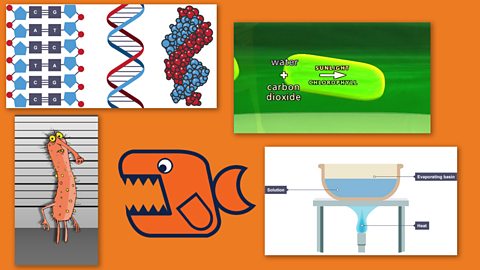Finding out the what, why and wherefore which keeps the world going is just one of many reasons people are drawn to science.
And that isn't just when you're starting to find out about the subject. The people who have turned science into their jobs still have plenty of 'wow' moments resulting from their experiments and research.
Every good scientist requires proof. So to show how rewarding it can be to keep on studying, BBC Bitesize contacted a variety of UK-based scientists working in different fields. We asked them about the most interesting facts and findings from their own studies, and each one showed something remarkable about our world (or beyond).
Zebrafish could help humans reach Mars
From: Prof Gary Hardiman PHD of the School of Biological Sciences at Queen’s University, Belfast

Hibernation and space travel
If humans are to explore further into the solar system in person, it will be a real challenge. Travelling to Mars could take between six and nine months, while a journey to Saturn could be as long as seven years. Prof Hardiman explained that this would cause psychological stress, as well as the difficulty in finding enough food, oxygen and water while independent of assistance from Earth.
However, if we can make astronauts hibernate on their journey, those difficulties may be solved. For example, it would lead to reduced brain function which would cut down on psychological stress. The change to our metabolism would stop us requiring food, oxygen or water and there is a possibility it would protect muscles from wasting due to the effects of radiation and microgravity.
Scientists have been looking at zebrafish in their research into this, to determine if this species is capable of a similar kind of hibernation.
The benefits for space pioneers
Prof Hardiman said: “NASA’s Artemis program aims to send the first woman to the moon in 2024. It will also develop a lunar base by 2028 to develop the technology that will be used to send humans to Mars in the 2030’s.
“It is therefore important that countermeasures are developed to maintain optimal human health while we expand the human footprint beyond Earth.”
Hibernation is a physiological condition found in many species that scientists are attempting to mimic in zebrafish. It protects these species against harsh conditions. If humans could replicate that, Prof Hardiman said it: “could increase our chances of making humans a spacefaring species.”
Certain coral reef team up to eat jellyfish
From: Prof J Murray Roberts, School of Geosciences, University of Edinburgh

Teamwork at teatime
When we see pictures of coral reef below the waves, they may look like solid rocky objects but they are in fact polyps, with mouths that gather food from the seawater. Stuck in place, they wait for food to come to them. It was believed for a long time that coral only ate tiny prey, but scientists have now learned this isn’t the case.
Prof Roberts said: “Some corals… can catch jellyfish, with their polyps even working together to hang on to the jellies. This helps the coral polyps, a bright orange species called Astroides calycularis, by giving each other a larger meal.”
This isn’t the best news for a jellyfish called Pelagia noctiluca, otherwise known as the mauve stinger, which becomes their meal. It is also the jellyfish responsible for the most painful stings people suffer while swimming in the Mediterranean.
Experienced scientists are always learning
According to Prof Roberts, this discovery shows how scientists are always learning.
He said: “Until scientists in the Mediterranean used diving equipment to watch these orange corals close-up we had no idea that their polyps could work together to catch big prey like these jellyfish.
“Most marine biologists think that corals don’t eat jellyfish, but these results show that we need to keep both our eyes and minds open to new discoveries - and spend more time in the water watching nature at work!”
In some parts of space it rains liquid iron
From: Dr Beth Biller, School of Physics and Astronomy at the University of Edinburgh

You’re going to need a stronger brolly
This phenomenon happens on objects in space called brown dwarfs.
Dr Biller said: “These are a type of celestial object that are heavier than planets but not as heavy as stars. Like planets, they can have clouds.
“But brown dwarfs are quite a bit hotter than planets in our solar system, about the temperature of a candle flame towards the top of their atmospheres.”
That increased heat gives a brown dwarf a very different type of cloud. They aren’t full of water, as they are on Earth, instead they are formed of hot dust and liquid iron droplets. That means, on occasion, a shower of liquid iron will hit the surface of brown dwarfs.
The excitement of other worlds
“This fascinates me as a scientist because I am interested in not just worlds like our own, but those that are very different as well,” said Dr Biller. “Studying lots of different planets and brown dwarfs means that we can build theories about how these objects form and what is in their atmospheres.”
She added: “It's also just exciting to try to imagine what such a different world would be like!”
Why your barbecue is a hotbed of science
There's a lot of chemistry sizzling away in those steaks.

The science of superheroes
How scientifically possible are your favourite superhero's powers?

The strenuous Bitesize science quiz
Have a go at this quiz made up of GCSE Science questions.
